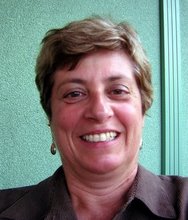Oak Ridge, Tennessee, � ??the city that made the atom bomb,� ? � clearly illustrates the difficult conundrum people must face when their government decides to build a stockpile of highly lethal nuclear weapons.
Â
The origins of this conundrum are steeped with justifications like (a) � ??the bomb� ? � ended the World War II and saved American lives; (b) the weapons protect us from our enemies and have prevented World War III; and (c) the research and manufacture of nuclear products preserve jobs, homes, and the local economy.
Â
From its beginning in 1942 Oak Ridge was an unsettling place. Located in the lush and beautiful Clinch River Valley of eastern Tennessee, it � ??mushroomed� ? � into a government � ??reservation� ? � of 75,000 people living and working in the middle of nowhere so research and production of the atomic bomb could be hidden from the enemy fascists of Germany. Unfortunately, the farmers and their families who lived there were dispossessed of their property and told to clear out in 10 days.Â
Â
Oak Ridge finally produced the plutonium for the � ??Little Boy� ? � and � ??Fat Man� ? � bombs dropped on Hiroshima (August 6) and Nagasaki (August 9) killing 140,000 and 80,000 respectively. Since then, tens of thousands more Japanese have died from leukemia and various cancers attributed to exposure to radiation released by the bombs. Nevertheless, when Japan surrendered on August 15, Oak Ridgers were jubilant because they were told that their work made a direct contribution toward ending the war.Â
Â
Life in the � ??Secret City� ? � wasn� ??t easy for the Oak Ridgers, who were mostly civilians literally living behind a security fence under the authority of the Army. Residents were expected to report any suspicious behavior of their neighbors and fellow workers. Employees had to sign a pledge not to divulge any secrets about their work, which was so broken down into smaller parts that only the top directors of the Manhattan project knew that the atom bomb was actually being built!
Â
Oak Ridge was conceived of as a temporary city with a single purpose and no one expected it would continue after the war. Housing was made of cheap, pre-fabricated materials. Facilities and amenities were meager and mud was everywhere.Â
Â
Soon after the war when the Oak Ridge mission was accomplished, some people left the � ??Secret City� ? � relieved to get out. Many people, however, wanted to stay because they believed that the knowledge discovered there was too valuable not to be further developed. Others stayed because they just wanted to keep their jobs. Then, Eugene Wigner, one of the legendary refugee scientists from Europe who provided the theoretical and practical knowledge that fueled the Manhattan project, created a new, peacetime purpose for nuclear research. As a result, the city was saved and this new purpose came in the form of radioactive isotopes that are used extensively in medicine (especially for thyroid disease and cancer therapy), agriculture, powering spacecrafts, smoke detectors, DNA analysis, diagnostic imaging and other advanced scientific applications. Now, the facilities behind the fence are known as the world-famous and highly-respected Oak Ridge National Laboratory (ORNL).
Â
Oak Ridge, today, is a thriving multicultural community of 27,000. It has a rich and proud history, good schools and wonderful cultural and environmental amenities that make the city an attractive place to live. ORNL and the University of Tennessee in Knoxville (25 miles away) help populate the city with well-traveled, well-read, well-educated, well-informed people who are very smart and like living in Oak Ridge. But even this is a conundrum when it comes to peacemaking activities.
Â
(Note: You can view every article as one long page if you sign up as an Advocate Member, or higher).





